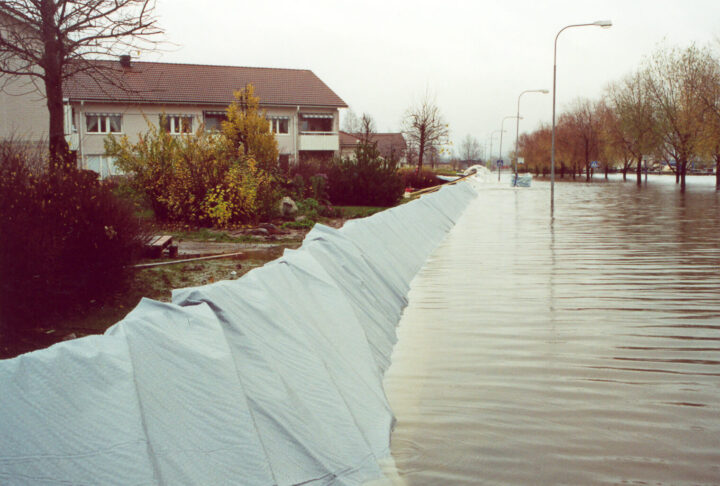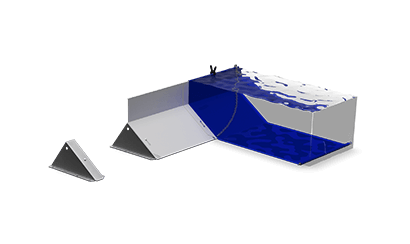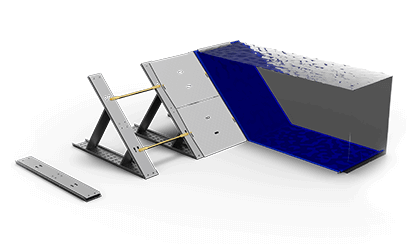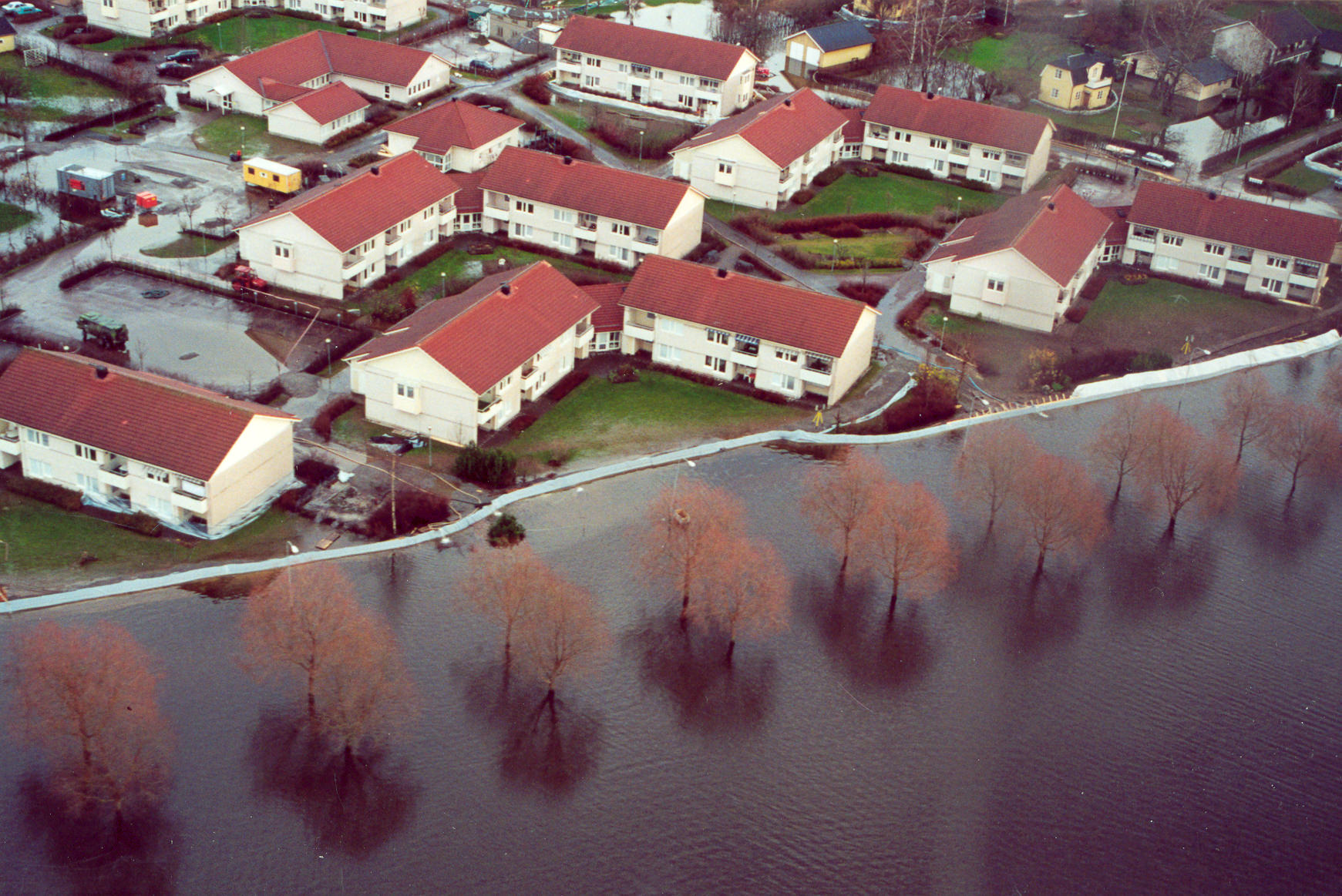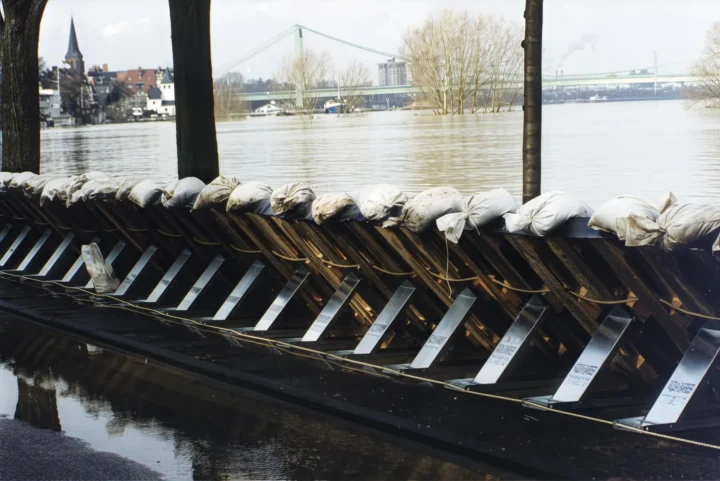The Rising Threat
Arvika lies on Lake Kyrkviken, a bay of the much larger Lake Glafsfjorden. While the town appears landlocked, it is part of an extensive waterway network that stretches from Norway down to Sweden’s west coast. Flooding has been part of its history, but November and December 2000 brought unprecedented conditions.
An unusually wet summer and autumn saturated the ground. Heavy rainfall across a 4,000 km² catchment, much of it from Norway, surged through tributaries into Glafsfjorden. The lake rose relentlessly — in some days by 12 cm — from +45.22 m to a peak of +48.36 m, over 3.14 m above normal.
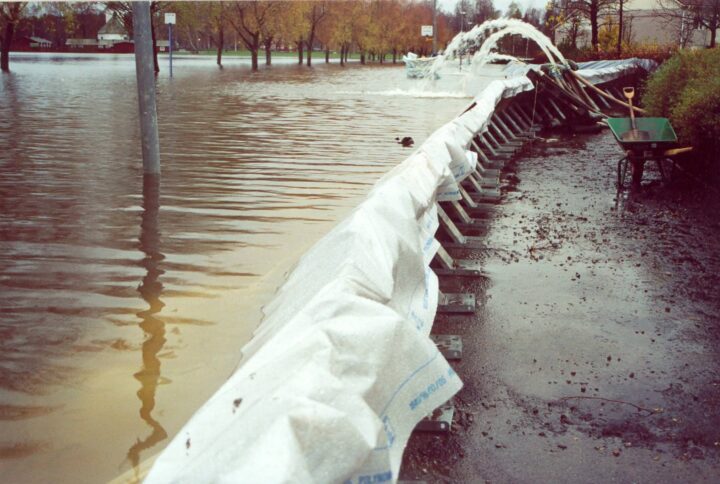
National Attention and Escalating Danger
By early November, sandbag walls surrounded critical infrastructure, but they struggled against the relentless pressure. Water seeped through drains, requiring constant pumping. Entire streets and parks were submerged. National media broadcast daily updates as the situation worsened, and the risk map for Värmland showed flooding spreading to nearby towns.
The Swedish Armed Forces (A9 Kristinehamn, P10 Strängnäs, T2 Skövde) and the Home Guard were deployed, joining local fire brigades and civil defence. Cultural and commercial assets — from archives and care homes to shopping centres and petrol stations — were under imminent threat.
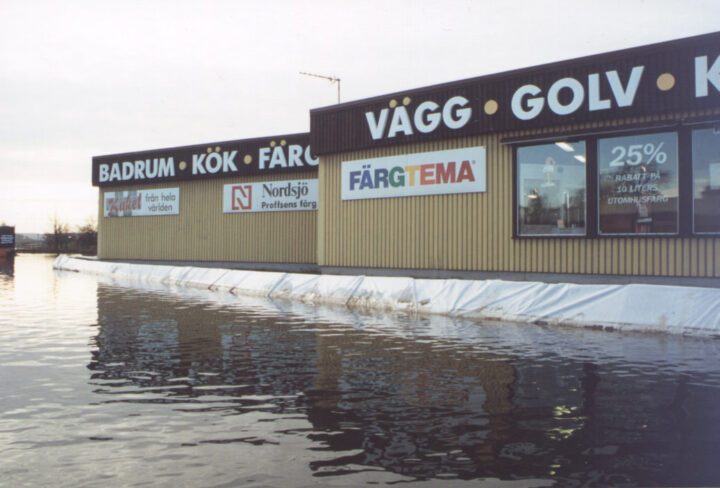
Geodesign’s Game-Changing Response
It was at this critical moment that Geodesign Barriers approached the municipality, offering a novel solution: the Pallet Barrier, a type of temporary flood barrier that could be rapidly deployed without the back-breaking work of filling and stacking sandbags.
Within days, almost 1,500–2,000 metres of barrier were installed across strategic locations, including:
- Strand estate – 650 m continuous barrier plus 100 m of security buffer
- Palmviken shopping centre – 300 m barrier plus 400 m of security barrier protecting two petrol stations, three supermarkets, and the bus station
These barriers came in multiple heights (0.65 m, 0.95 m, and up to 1.8 m), tailored to the depth of water in each location — which reached between 0.5 m and 1.3 m outside the barrier lines.

Overcoming Extreme Conditions
Strong winds whipped up waves on Lake Kyrkviken, threatening to overtop the 0.95 m defences. Engineers improvised by adding timber extensions, raising the effective dam height to 1.2 m. Pumps worked continuously to remove seepage and prevent backflow through drains. In especially vulnerable sites like the lakeside care home — built on a floodplain — extra sealing and pumping were required.
Despite the intensity of the flood, the barrier held. Areas behind the defences remained dry while unprotected districts saw severe inundation, including hundreds of holiday cottages around Glafsfjorden.
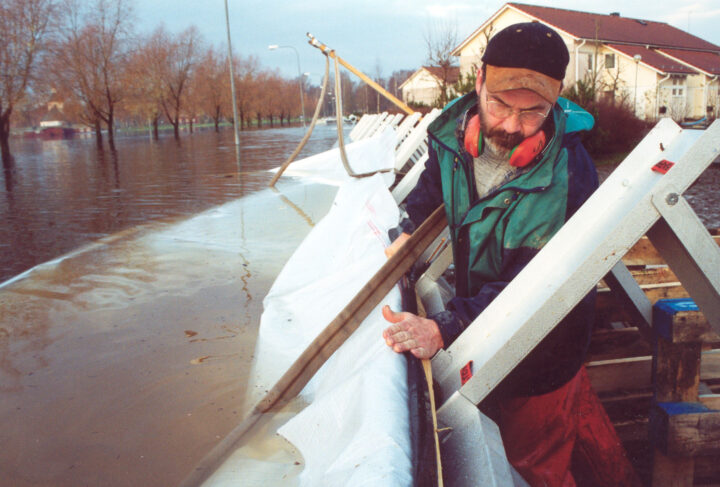
A National Milestone in Flood Defence
The Arvika operation was praised by Sweden’s highest leaders, including the King, the Crown Prince, the Prime Minister, and the Environment Minister. In 2001, Geodesign founder and engineer Sten-Magnus Kullberg was named Inventor of the Year by the Swedish Inventors’ Association.
This event proved that deployable flood barriers could replace sandbags for large-scale operations. It set a precedent for emergency flood response not just in Sweden but worldwide.
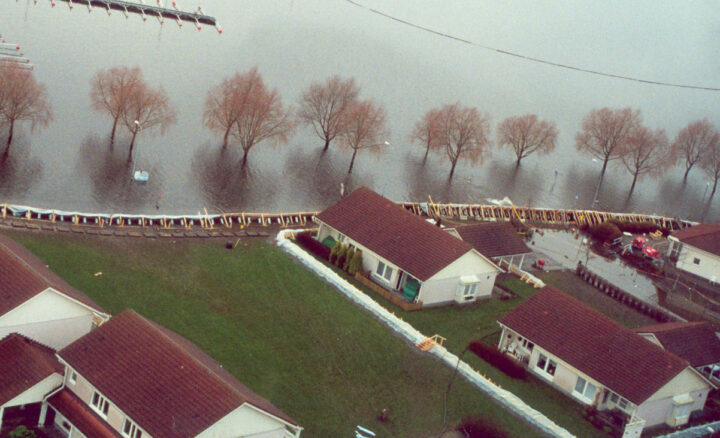
Legacy and Long-Term Impact
Since 2000, Arvika has deployed its Geodesign barrier system multiple times. Its durability, long lifespan, and reusability have made it a cost-effective solution, sparing residents and businesses from the devastation and expense of repeated flooding.
Today, Geodesign Barriers offers FM Approved ANSI/FM 2510-certified flood protection products, ensuring that the same innovative spirit that saved Arvika continues to protect communities globally.
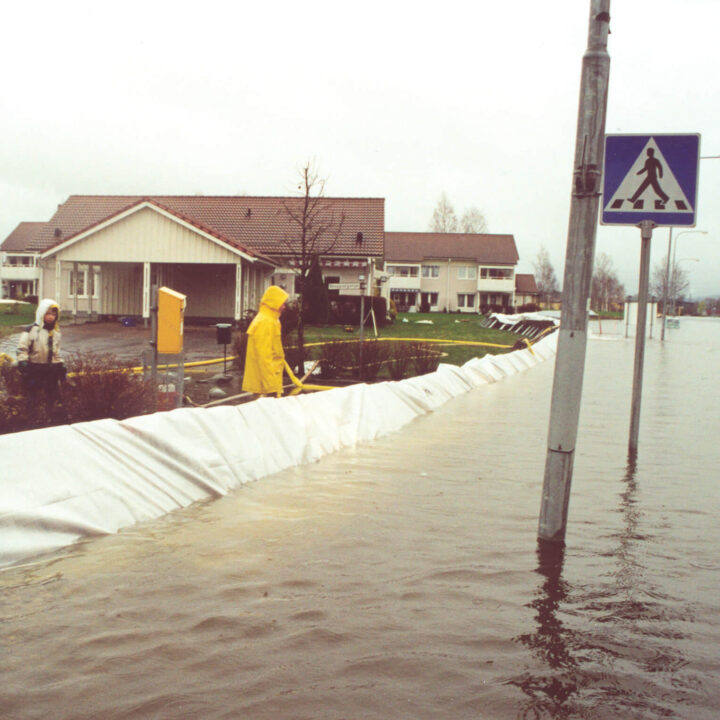
Conclusion
The 2000 Arvika flood was a turning point in modern flood defence — a historic milestone demonstrating that mobile, temporary flood barriers can be deployed on a massive scale with life-saving results. What began as a desperate fight against rising water became a showcase of Swedish engineering, resilience, and innovation.
